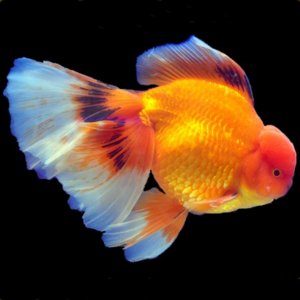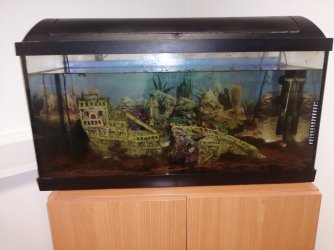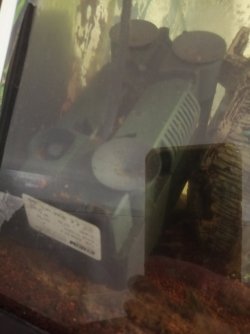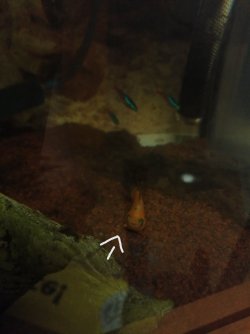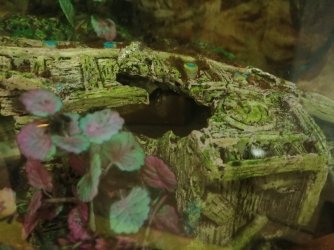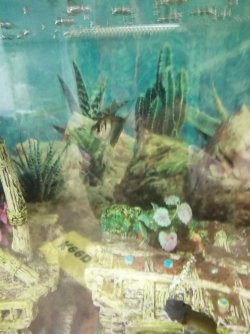Hi and welcome to the forum

Because the tank doesn't get water changed very often, you should start out small and slow. Do a 10% water change and gravel clean the substrate every day for a few weeks. This will slowly dilute the old water with newer clean water and there will be less shock/ stress to the fish.
After a couple of weeks you can do a 20% water change and gravel clean the substrate every day for a couple of weeks. Obviously if your at work Monday to Friday, just do the water changes then. You don't have to go in on your days off specifically to do water changes.
After that you can do a 30% water change and gravel clean every day for a week.
Then a 50% water change and gravel clean every day for a week.
After that you can do a 75% water change and gravel clean once a week or once every two weeks.
--------------------
DECHLORINATING TAP WATER
Any new water needs to be dechlorinated (free of chlorine/ chloramine) before it's added to the tank. In the box of goodies, there is a bottle of Fluval water conditioner. This is used to neutralise chlorine in tap water.
If you can contact your water company via their website or telephone, see if you can find out if you have chlorine or chloramine in the water supply. They are different and whilst most water conditioners will treat both, they normally use a higher dose rate for chloramine. So find out if you have chlorine or chloramine before you do a water change.
If you can get a couple of new buckets and use a permanent marker to write "FISH ONLY" on the buckets, then keep those buckets specifically for the fish. Don't let anyone use the fish buckets for anything except the fish tank.
When you do a water change, you can scoop or drain water out of the tank into the fish buckets. The dirty water can be poured on the lawn or garden. Then rinse the bucket/s out with tap water. Add the required amount of Fluval water conditioner to treat the bucket. The bottle of water conditioner should have directions on it saying 5ml per 20 litres, or something like that. When you have put the water conditioner in the bucket, then fill the bucket with tap water. Put the bucket somewhere out of the water and stir it up with your hand for a couple of minutes to mix the dechlorinator with the tap water. Then scoop or slowly pour that new water into the aquarium.
Further down the road, you can invest in an air pump, some airline and an airstone. This can be used to aerate the tap water and dechlorinator instead of using your hand. If you get an air pump and associated equipment, you fill the bucket with water and dechlorinator, put the airstone in the bucket of water and turn the air pump on. The air pump sits on a shelf away from the bucket and does not go in the water. You let the air pump run for about 30 minutes and this mixes the dechlorinator and water and it also gets the dissolved gasses in the water back to their normal levels. Aerating the water with an air pump and airstone is not essential but it does make the water a bit safer for the fish.
--------------------
GRAVEL CLEANER
To remove water and clean the gravel at the same time, get a basic model gravel cleaner like the one in the following link. It will allow you to clean the gunk out of the gravel without removing the gravel from the aquarium. You can buy gravel cleaners from any pet shop and ask the shop assistant to demonstrate its use. You can also look on YouTube and search for how to use a gravel cleaner.
When you get a gravel cleaner, don't buy a fancy super duper you bute one with bells and whistles, they are completely unnecessary. Just get a basic model like the one in the link. If you can't find one, let me know and I can tell you how to make one from a plastic drink bottle and garden hose.
Aquarium cleaning should take 30 minutes every two weeks. Learn how the professionals do it in 18 easy steps.

www.about-goldfish.com
--------------------
TOPPING THE TANK UP
I'm not sure how full the tank is, but it doesn't look full. Before you do a water change, you can slowly fill the tank up so it's a couple of inches below the top. Make up some dechlorinated water and slowly add it to the tank. Don't add too much each day. Try to add about 10% of the tank volume each day until it is full. Then start doing the daily 10% water changes.
The fish remain in the aquarium when you do water changes. Just leave them be and scoop or syphon some water out.
--------------------
CLEAN HANDS
When you work in the aquarium, rinse your hands down with straight tap water before doing anything in the aquarium. Make sure you don't have any moisturising cream, perfume, oil, grease, disinfectant/ hand sanitiser, or anything else on your hands. These things can all poison the fish. So clean hands before you work in the tank.
After you have cleaned the tank and put the fish buckets and sponge away, wash your hands with soapy water. Fish tanks are full of micro-organisms and you want to wash these off your hands after working in the tank.
--------------------
CLEANING THE GLASS
You can use a sponge to wipe the glass down and get rid of the algae. Make sure the sponge is Soap Free and does not contain mould inhibiters or anything else. Generally the cheaper sponges don't have anything added to them and they are usually safer.
If you buy a new sponge, wash it with warm soapy water a few times and then rinse it really well. Most sponges have green or yellow dye in them and this can leach into the aquarium if the sponge isn't washed first.
Make sure you use a soap that does not contain antiseptic or disinfectant, and no perfumed soap. Just use a bland boring soap that doesn't smell pretty. Then rinse the sponge really well to remove any soap residue.
When you have a clean sponge, keep it with the fish gear and don't let anyone use it for anything except the aquarium.
--------------------
THE FILTER
If you can post some pictures of the filter, we can tell you how to clean it. As a general rule, you do not replace the filter media/ materials unless they start to fall apart. The filter media holds gunk and good bacteria. If you throw the old media away, you get rid of the good filter bacteria and the tank will have water quality problems.
Don't bother cleaning the filter just yet. It probably needs a clean but show us what type it is first and then we can take you through the process of cleaning it.
--------------------
THINGS IN THE BOX
There are a couple of bottles of plant fertiliser in the box. Do not add any of that to the aquarium. The same with the salt, don't add any salt to the aquarium. And the remaining bottle is white spot medication, again, don't add any of that to the tank.
--------------------
STARTING NOW
From this point on, contact the water company to find out if you have chlorine or chloramine.
Top up the tank with dechlorinated.
Try to find a gravel cleaner.
Start doing small daily water changes and gravel clean part of the substrate each time you do a water change.
Take pictures and post details of the filter.






